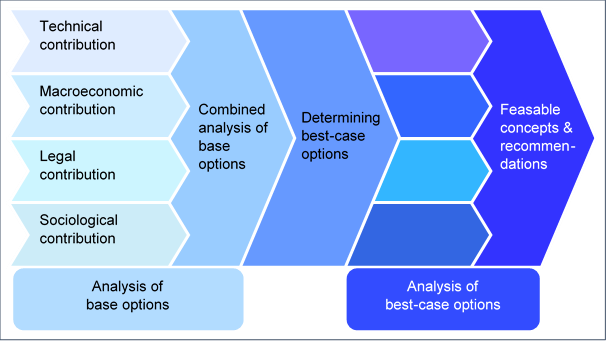The German Case Study within the ELEGANCY-project examines ways to decarbonise the German infrastructure with H2-CCS chains, focusing on pipeline-based options for CO2 and hydrogen. Based on interdisciplinary contributions from engineering, macroeconomics, legal studies and sociology with specific focuses and approaches, the German Case Study analyses different infrastructure options to develop feasible concepts and make well-founded recommendations.
The final design and first results of the analyses are now available in the report D5.5.2 German case study: Final design and first results.
- Authors: Daniel Benrath, Stefan Flamme, Sabrina Glanz, Franziska M. Hoffart from Ruhr-Universität Bochum, Germany
The report summarises the recent progress, depicting the framework for the interdisciplinary collaboration in the German case study and communicating first results of the discipline specific contributions.
- Read this blog-post: ELEGANCY Dutch Case Study: TNO initiates industrial participation with H-Vision project
The framework for interdisciplinary collaboration and evaluation
The final design of the interdisciplinary collaboration is presented in the figure.

In the first step, three base options for integrating H2-CCS chains into the German infrastructure are analysed by combining the ongoing work of the different disciplines. The base options are
- A pipeline infrastructure to transport CO2 to the Netherlands for offshore CCS
- Adjustments to the natural gas grid to admix more hydrogen
- A pure hydrogen transport grid
The combined analysis is built upon the individual disciplinary results in terms of potentials, risks and barriers.
- Read this blog-post: The Potential for Hydrogen in Europe Executive summary of the Hydrogen for Europe pre-study
Then, best-case options that describe feasible basic infrastructure concepts to integrate H2-CCS chains are identified. This is based on the combined analysis of the base options as well as results and experiences of other projects and work within ELEGANCY.
In the final step, the specific barriers, risks and potentials of the best-case option are discussed to develop feasible concepts and recommendations. This discussion includes input by the individual disciplines as well as collaborative contributions.
The details of the interdisciplinary methodology depend on the results and contributions of each discipline and will be determined at a later stage.
The methodology of the individual disciplinary approaches was established early in the project and refined further on. This is described in the first report D5.5.1 German case study: First Assessment of Options for a Decarbonised Gas Infrastructure and in the ICAE 2018 paper ELEGANCY: The Interdisciplinary Approach of the German Case Study to Enable a Low Carbon Economy by Hydrogen and CCS.
- Read this blog-post: ELEGANCY: From Helmholtz-type Equations of State to Legal Condtitons
First results from the individual disciplines
The first result presented in the report are:
- Relevant technical data
- First conclusions on the relevance of stakeholder interaction and the level of overall transformation from macroeconomic scenario analysis
- The legal landscape of applicable law
- First conclusions for social acceptance of relevant infrastructure projects from explorative stakeholder interviews
On the technical side, the selection of CO2 point sources was completed, taking into account the CO2 concentration and total amounts of emissions. For the admixture of hydrogen into the natural gas grid an overall screening of feasible concentrations and distribution is in progress. For the pure hydrogen solution, besides the classic hydrogen industry the sectors, heating and mobility are being evaluated for their hydrogen potentials.
The macroeconomic scenario analysis resulted in six socio-technical scenarios. These scenarios vary in the level of overall transformation which is mainly driven by the interaction between the stakeholder groups. It can be concluded that the overall level of transformation largely determines the feasibility of the infrastructure options.
The analysis of the legal landscape of applicable law shows the differences and similarities of the relevant pipeline regimes for different areas of law such as the regulatory framework, planning instruments and procedures, system responsibility or cross border trade rules. The high degree of legal uncertainty in regard to hydrogen pipelines is highlighted.
On the sociological side, the explorative interviews indicate controversial as well as consensual perceptions of the options from the stakeholders’ perspective. The assessments range from rejection of an H2-CCS chain to deeming it absolutely necessary. Risk perception, infrastructural consequences and compatibility with renewable energies have been identified as key factors for social acceptance.
For more information, read the full report
The report gives a range of broad impressions and interesting details from very different perspectives on the matter of H2-CCS infrastructure. It illustrates the progress of the German Case Study and shows which results can be expected.

Pingback: Consumet: Constructor of surrogate models and metamodels - #SINTEFblog
Pingback: H2/CCS chains in Germany – Social Perception and Acceptance - #SINTEFblog